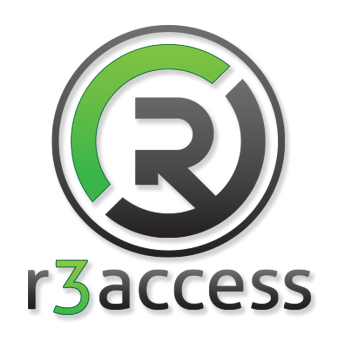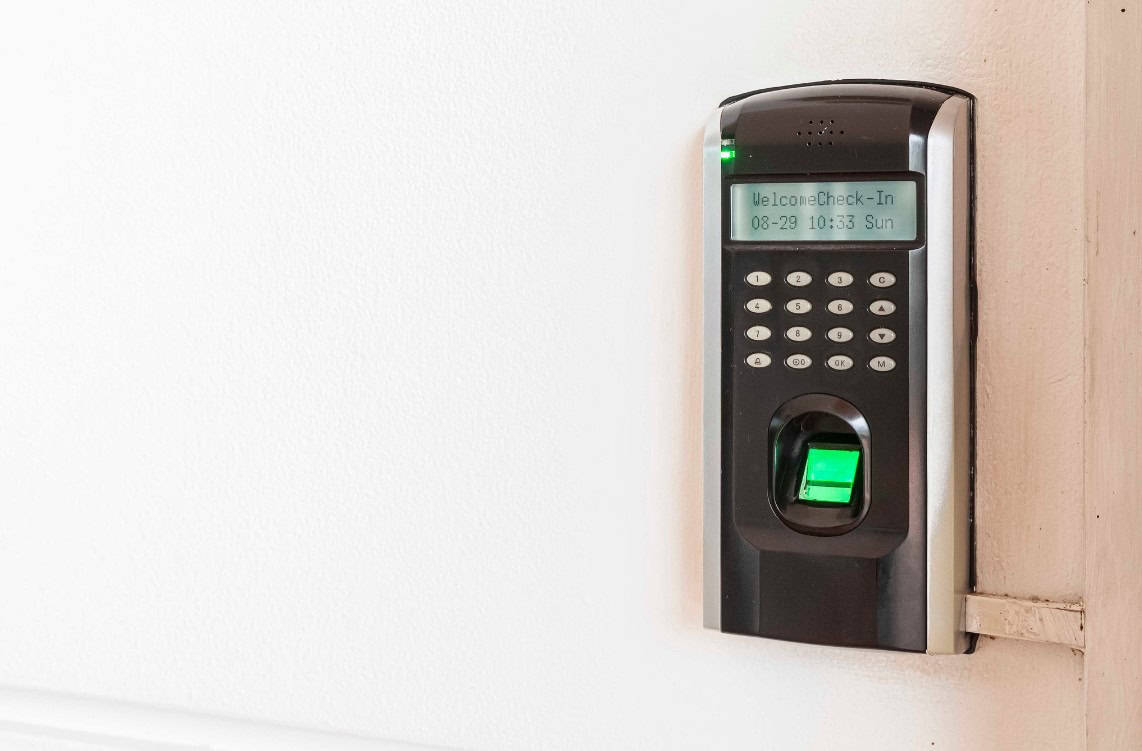Selecting the right card reader for your access control system is crucial. Whether for a commercial building, a residential area, or a high-security zone, the decision between wall-mounted and stand-alone card readers affects the security of your premises and the convenience for users and administrators. As R3 Access, we understand the importance of this decision and are here to guide you through the nuances to find the best fit for your situation.
Overview of Wall-Mounted Card Readers
Wall-mounted card readers are integral to modern access control systems, offering a fixed solution that blends seamlessly with the environment. These systems are connected to the central security network, providing real-time data and complete control over access points. They are ideal for permanent installations where a consistent, integrated solution is necessary for comprehensive security management.
Installation of these systems requires considering factors such as the building’s layout and electrical infrastructure. The placement is crucial for maximizing efficiency and ensuring access points are secure yet accessible for authorized individuals. Professional installation ensures the system operates flawlessly, with wall-mounted readers often positioned at key entry points for optimal functionality.
The security benefits of wall-mounted card readers are significant. Being part of a centralized system offers enhanced monitoring capabilities, allowing for immediate response to security breaches. These systems can also integrate with other security measures, providing a layered approach to security that includes surveillance cameras, alarms, and motion detectors.
Despite the higher initial investment, the long-term benefits of wall-mounted card readers include reduced maintenance needs and the ability to scale and update the system as technology advances or as the facility’s security demands change. This makes them an excellent option for organizations seeking a reliable, long-term security solution.
Benefits of Stand-Alone Card Readers
Stand-alone card readers represent a flexible and dynamic solution for many access control scenarios. They shine in environments where rapid deployment or reconfiguration is necessary, providing a straightforward setup process without extensive wiring or system integration. These devices empower administrators to quickly adapt access control measures to evolving security requirements or operational changes, ensuring that security protocols can be maintained without significant downtime or logistical challenges.
Key benefits of stand-alone card readers include:
- Ease of Installation: They are quick to set up and require minimal technical knowledge, making them ideal for temporary or mobile setups.
- Flexibility: Easily relocated or reprogrammed to accommodate changing access needs or physical layouts.
- Independence: It operates without a central system connection, making it suitable for remote or less accessible locations.
- Cost-Effectiveness: Generally lower initial investment compared to integrated systems, with the ability to scale or modify without impacting existing infrastructure.
Stand-alone card readers offer unparalleled adaptability. They are especially valuable in scenarios where traditional, fixed systems would be impractical or overly costly. For sites undergoing construction, temporary events, or facilities that require a modular approach to security, stand-alone options provide a potent mix of control, simplicity, and efficiency.
These readers are not just about providing a stopgap solution; they are about offering a reliable, stand-alone access control system that can function effectively across various scenarios, from construction sites to temporary access areas, and even in permanent installations where flexibility remains a priority. As technology advances, the capabilities of these devices continue to expand, ensuring they remain a viable and effective choice for a wide array of access control challenges.
The decision to choose stand-alone card readers should be influenced by a thorough assessment of your operational environment and security objectives. R3 Access is committed to guiding you through this process, ensuring that your selected solution meets and exceeds your security, efficiency, and adaptability expectations.
Installation Considerations
Assessing environmental and architectural factors is paramount when installing an access control system. Wall-mounted card readers require a strategic placement plan to ensure optimal performance and user accessibility. This involves determining the best installation locations that are convenient for users and secure from unauthorized tampering. The structural integrity of walls, potential interference from nearby metal objects, and accessibility for wiring are vital considerations.
Key Installation Points:
- Evaluate the structural suitability of wall-mounted card readers.
- Consider the ease of access for users and maintenance personnel.
- Assess environmental conditions that may affect device performance, such as moisture and temperature.
- Plan for future scalability and possible system expansions.
Stand-alone card readers offer a different set of installation challenges and benefits. Their flexibility in placement means they can be moved or adjusted without significant structural modifications. However, their location is still critical to ensure they are accessible to users and protected from environmental damage and vandalism. Battery life and power source options also play a significant role in the placement and functionality of these devices.
Both systems require thorough planning to ensure they meet your security objectives and integrate smoothly with existing infrastructure. For wall-mounted systems, this may involve coordination with electrical and network technicians to ensure proper wiring and connectivity. For stand-alone units, considerations include the ease of programming, the method of data transmission, and how they will be incorporated into the overall security plan.
The installation of wall-mounted and stand-alone card readers should be approached with a detailed plan that considers all potential variables. Consulting professionals with experience in access control systems can provide invaluable guidance and ensure your installation is successful.
Security Features Compared
Wall-mounted systems typically integrate with broader security networks, offering advanced features like biometric scans and real-time surveillance linkage. They cater to environments demanding high security, where system integrity and advanced user verification are critical. Conversely, stand-alone card readers, while simpler, still provide effective security measures such as encryption and programmable access codes. They suit scenarios where flexibility and ease of use are vital without compromising safety.
The technological foundation of each type also dictates their security capabilities.
Wall mounted units are often part of sophisticated systems capable of detailed audits and immediate security alerts, making them ideal for areas requiring stringent access control. The comprehensive security protocols supported by these devices ensure a fortified barrier against unauthorized access. While not as integrated, stand-alone units still offer robust security options like time-based access control and personal identification number (PIN) requirements, making them suitable for less sensitive or smaller-scale applications.
The security measures in place for managing and updating these systems vary. Wall-mounted readers benefit from centralized management, which allows immediate updates and patches, which are crucial for maintaining security integrity against new threats. In contrast, stand-alone readers require individual updates, which can be a limitation in rapidly evolving security environments but offer the advantage of isolated systems, reducing the risk of widespread breaches.
The existing security infrastructure and the desired level of security oversight should influence the decision between these two types of card readers. Institutions with extensive security networks may prefer the integrated approach of wall-mounted readers. At the same time, locations with simpler requirements or temporary setups may find stand-alone readers’ independence and ease of setup more appealing. Each type serves distinct security demands, with the choice heavily dependent on the facility’s specific use case and security expectations.
Cost Analysis
When examining the financial aspects of card readers, initial setup costs represent a significant factor. Wall-mounted systems often involve a higher initial outlay, mainly due to the complexity of their integration into existing security infrastructures and the necessity for professional installation. This initial investment is generally justified by their longevity and the enhanced security they provide, particularly in environments requiring sophisticated access controls.
Conversely, stand-alone card readers present a more cost-effective solution upfront. Their installation is typically straightforward, minimizing the need for professional services, which can significantly reduce initial costs. However, these systems may require more frequent updates or replacements than their wall-mounted counterparts, leading to potentially higher long-term expenses.
Operational costs also differ markedly between the two systems. Integrating wall-mounted card readers into broader security systems might result in lower maintenance and operational costs over time, particularly as these systems benefit from centralized monitoring and management. This can lead to efficiencies and cost savings, particularly in larger facilities or those requiring stringent security measures.
On the flip side, stand-alone card readers, while less expensive initially, might incur higher operational costs. These can stem from the need for regular updates, battery replacements, or the potential need to replace units that become obsolete or fail. This consideration is crucial for budgeting and forecasting the long-term financial impact of the chosen access control system on the organization’s finances.
Making the Right Choice for Your Facility
Choosing between wall-mounted card readers and stand-alone card readers hinges on understanding your property’s layout, traffic patterns, and security requirements. For larger facilities or those with fixed entry points, wall-mounted readers provide a seamless, integrated solution that can handle high traffic and work in tandem with other security systems. They are ideal for establishments seeking a permanent, robust access control solution that blends into the architectural design.
In contrast, stand-alone card readers offer unmatched flexibility and are perfect for locations with changing access needs or for areas where installing permanent infrastructure is not feasible. They are suitable for temporary events, smaller office spaces, or satellite locations. These systems allow for quick adjustments and can be easily moved or reprogrammed, providing a practical solution without the complexities of wired systems.
The decision should also factor in future growth and potential changes in use patterns. For those planning expansions or foreseeing shifts in how spaces are used, the scalability and adaptability of your access control system are crucial. Stand-alone units might provide the agility required, while wall-mounted systems could offer a more scalable, long-term solution.
By considering all these factors, you can make an informed decision that ensures security, efficiency, and scalability. Our team is here to support you in selecting the access control system that aligns with your operational objectives and security standards.
Contact R3 Access
Whether you’re deciding between wall-mounted card readers and stand-alone card readers or require assistance with any other access control solutions, our team is ready to help. We are dedicated to providing the best service and solutions tailored to your facility’s security requirements. Please contact us for expert advice and assistance.
Top Wall-Mounted Card Readers
Cellgate: Watchman W460
A versatile wall-mounted card reader designed for secure access control. It offers robust performance for managing entry points in residential or commercial settings.
Key Features:
- Durable and versatile wall-mounted design
- Supports multiple access methods
- Real-time access monitoring and alerts
- Easy integration with existing security systems
- Remote management capabilities
FAAC: Easypass 100
A reliable wall-mounted card reader that provides efficient access management solutions. Ideal for facilities requiring a seamless and secure entry system.
Key Features:
- Efficient wall-mounted design
- Secure and reliable access control
- User-friendly interface
- Compatible with various access credentials
- Easy installation and maintenance
Liftmaster: CAPXLV
An advanced access control system featuring a wall-mounted card reader. It integrates modern security technology to ensure controlled and monitored entry for enhanced safety.


